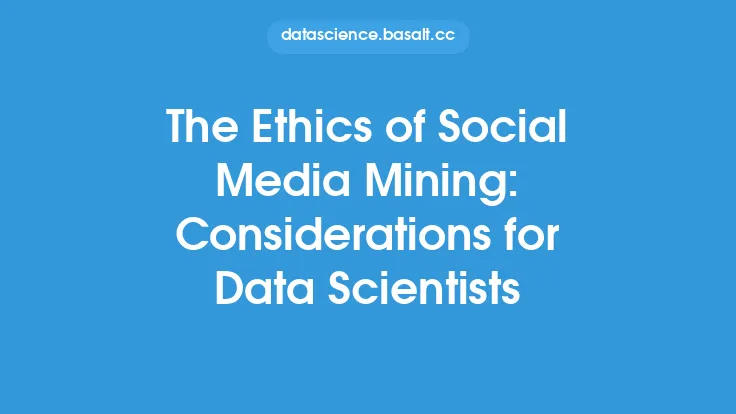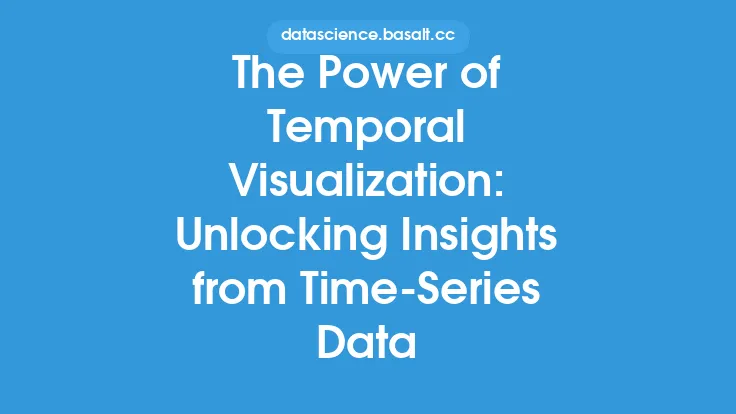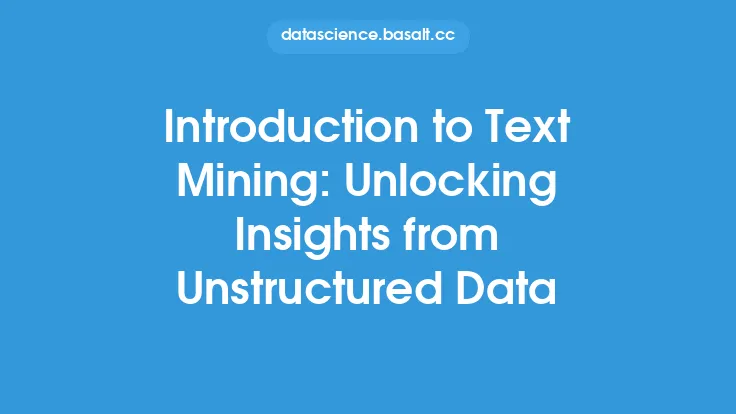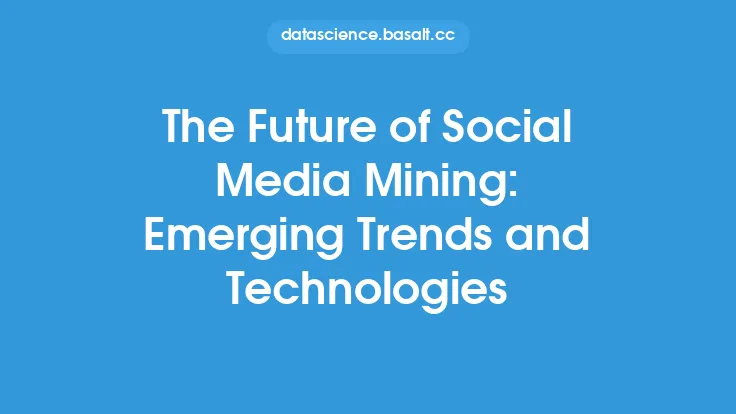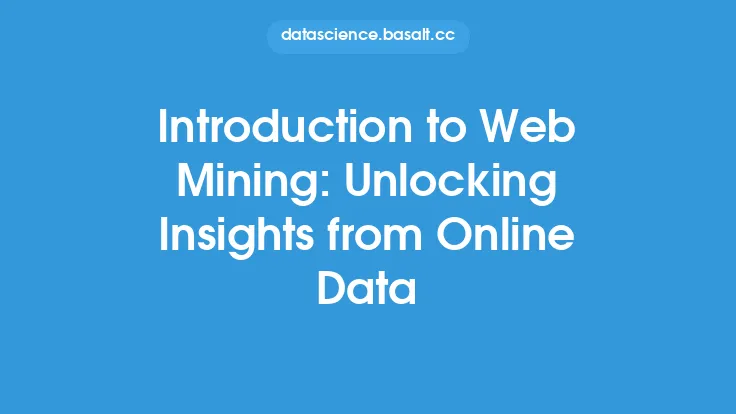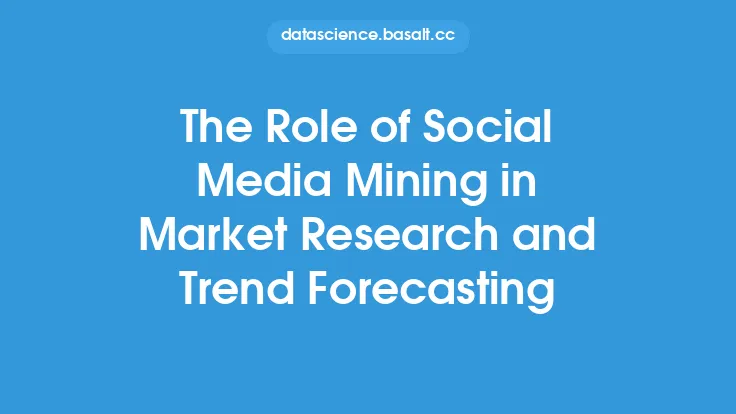The advent of social media has revolutionized the way people communicate, interact, and share information. With billions of users worldwide, social media platforms have become a treasure trove of data, offering valuable insights into human behavior, preferences, and opinions. Social media mining, a subset of data mining, is the process of extracting and analyzing data from social media platforms to uncover patterns, trends, and correlations. This article delves into the power of social media mining, exploring its concepts, techniques, and applications, and highlighting the benefits and challenges associated with this rapidly evolving field.
Introduction to Social Media Mining
Social media mining involves the use of various techniques, including natural language processing, machine learning, and data visualization, to extract insights from social media data. The process typically begins with data collection, where social media posts, comments, and other user-generated content are gathered from various platforms, such as Twitter, Facebook, and Instagram. The collected data is then preprocessed to remove noise, handle missing values, and transform the data into a suitable format for analysis. Next, various mining techniques, such as text mining, sentiment analysis, and network analysis, are applied to uncover patterns and relationships within the data.
Techniques and Tools for Social Media Mining
Several techniques and tools are used in social media mining, including:
- Text Mining: This involves extracting relevant information from unstructured text data, such as social media posts and comments. Text mining techniques, including tokenization, stemming, and lemmatization, are used to preprocess the text data, followed by the application of machine learning algorithms, such as naive Bayes and support vector machines, to classify the text into categories, such as positive, negative, or neutral.
- Sentiment Analysis: This technique is used to determine the emotional tone or sentiment of social media posts, comments, and reviews. Sentiment analysis can be performed using machine learning algorithms, such as supervised learning, or rule-based approaches, such as lexicon-based methods.
- Network Analysis: This involves analyzing the relationships and interactions between social media users, including follower networks, friend networks, and comment threads. Network analysis techniques, such as centrality measures and community detection, are used to identify influential users, clusters, and trends.
- Data Visualization: This involves presenting social media data in a visual format, such as charts, graphs, and heat maps, to facilitate understanding and insights. Data visualization tools, such as Tableau, Power BI, and D3.js, are used to create interactive and dynamic visualizations.
Applications of Social Media Mining
Social media mining has numerous applications across various domains, including:
- Marketing and Advertising: Social media mining is used to analyze customer opinions, preferences, and behaviors, enabling businesses to create targeted marketing campaigns and improve their brand reputation.
- Customer Service: Social media mining is used to monitor customer complaints, feedback, and reviews, enabling businesses to respond promptly and improve their customer service.
- Public Health: Social media mining is used to track disease outbreaks, monitor public health trends, and identify risk factors, enabling health organizations to respond promptly and effectively.
- Politics and Governance: Social media mining is used to analyze public opinions, sentiments, and behaviors, enabling governments and politicians to create informed policies and campaigns.
Challenges and Limitations of Social Media Mining
While social media mining offers numerous benefits, it also poses several challenges and limitations, including:
- Data Quality: Social media data is often noisy, incomplete, and biased, which can affect the accuracy and reliability of the insights extracted.
- Data Volume: Social media data is vast and constantly growing, which can make it challenging to collect, process, and analyze.
- Privacy and Ethics: Social media mining raises concerns about user privacy and ethics, as it involves collecting and analyzing personal data without explicit consent.
- Algorithmic Bias: Social media mining algorithms can be biased, which can result in inaccurate or unfair insights, particularly in areas such as sentiment analysis and predictive modeling.
Best Practices for Social Media Mining
To overcome the challenges and limitations of social media mining, several best practices can be followed, including:
- Data Validation: Validate the accuracy and reliability of the social media data collected, using techniques such as data cleaning and data normalization.
- Algorithmic Auditing: Audit the social media mining algorithms used, to detect and mitigate bias, and ensure fairness and transparency.
- User Consent: Obtain explicit consent from social media users, before collecting and analyzing their data, and ensure that their privacy is protected.
- Transparency and Accountability: Ensure transparency and accountability in social media mining, by providing clear explanations of the methods and techniques used, and the insights extracted.
Conclusion
Social media mining is a powerful tool for extracting insights from online conversations, offering numerous benefits and applications across various domains. However, it also poses several challenges and limitations, including data quality, data volume, privacy and ethics, and algorithmic bias. By following best practices, such as data validation, algorithmic auditing, user consent, and transparency and accountability, social media mining can be performed in a responsible and effective manner, unlocking the full potential of social media data. As social media continues to evolve and grow, social media mining will play an increasingly important role in helping businesses, organizations, and governments to understand and engage with their audiences, and make informed decisions.
